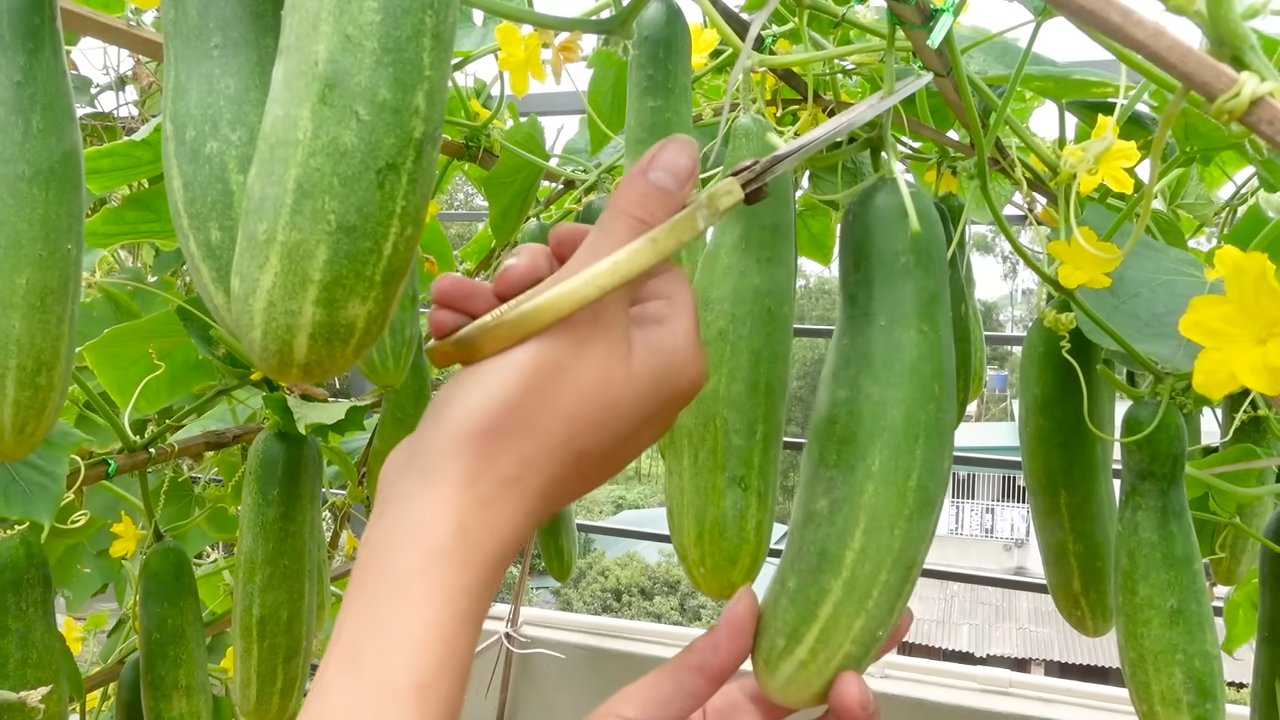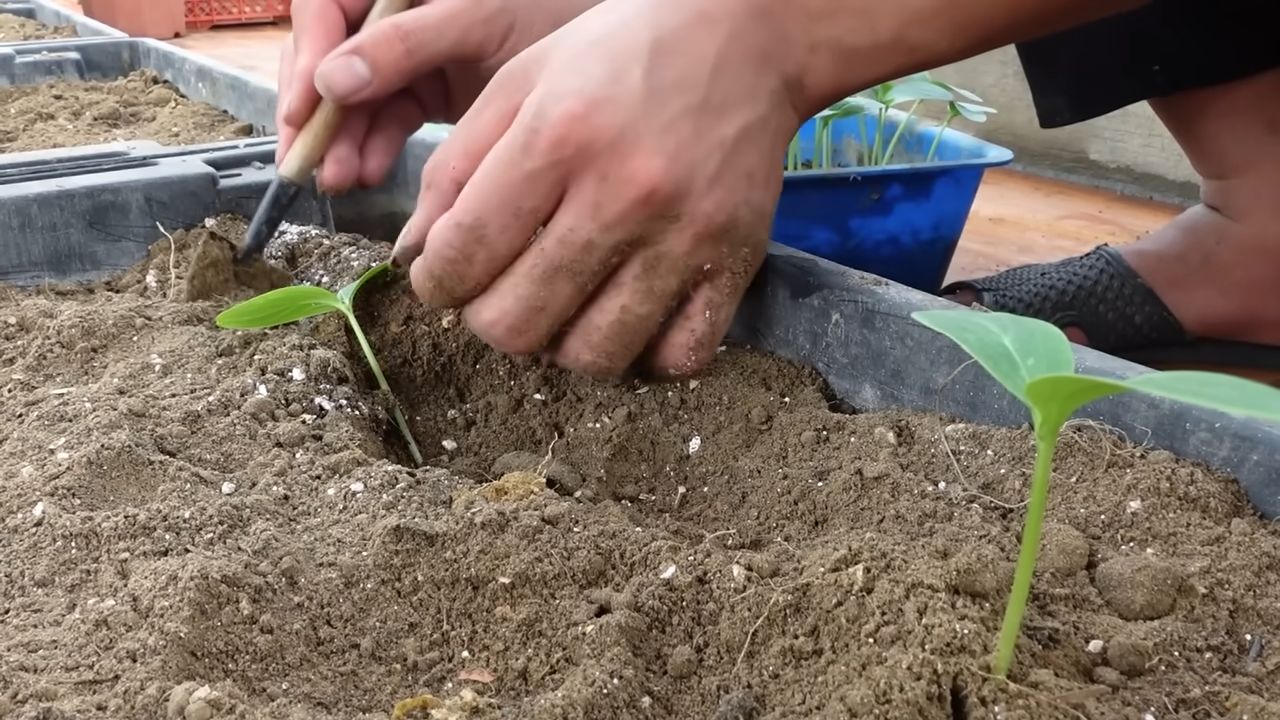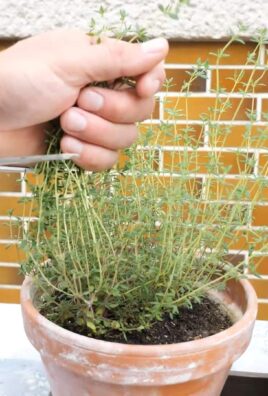Grow Cucumbers Indoors? Absolutely! Imagine plucking a crisp, refreshing cucumber straight from the vine, right in your own living room. Sounds like a dream, doesn’t it? Well, it’s a dream that can easily become a reality with a few simple tricks and a little DIY spirit. For centuries, humans have cultivated plants indoors, from the elaborate orangeries of European royalty to the humble windowsill herb gardens of today. But growing cucumbers indoors? That’s where the real fun begins!
Why should you bother learning how to grow cucumbers indoors? Well, for starters, you can enjoy fresh cucumbers year-round, regardless of the weather outside. No more relying on grocery store produce that may have traveled hundreds of miles! Plus, it’s incredibly rewarding to nurture a plant from seed to harvest, witnessing the miracle of nature unfold before your eyes. And let’s be honest, who wouldn’t want to impress their friends and family with their indoor gardening prowess? This DIY guide will provide you with the essential tips and tricks to successfully cultivate these delicious veggies within the comfort of your home. Get ready to roll up your sleeves and embark on a rewarding gardening adventure!

Growing Cucumbers Indoors: Your Comprehensive DIY Guide
Hey plant friends! Are you tired of short summers and the desire to enjoy fresh cucumbers all year round? Then you’ve come to the right place! I’ll show you how you can grow your own cucumbers indoors—without a garden and with minimal effort. It’s easier than you think, I promise!
What You Need: The Shopping List
Before we get started, here is a list of everything you’ll need for your indoor cucumber project:
- Cucumber seeds: Choose a variety that is suitable for growing in a pot. Bush varieties or mini-cucumbers are ideal.
- Pots: Large pots with good drainage are important. A volume of at least 20 liters (5 gallons) per plant is recommended.
- High-quality potting soil: Well-draining soil with sufficient nutrients is essential.
- Trellises or supports: Cucumbers are climbing plants and need support.
- Grow lights: Especially in winter when daylight is scarce, grow lights are essential.
- Fertilizer: A liquid fertilizer specifically for vegetables or tomatoes is perfect.
- Spray bottle: For watering and increasing humidity.
- Patience: Cucumbers need time to grow and bear fruit.
Step-by-Step Guide: How to Succeed at Growing Cucumbers Indoors
1. Preparing the Seeds:
- I usually start by pre-soaking the seeds. This speeds up germination. Simply place the seeds in a glass of lukewarm water for 12-24 hours.
- Alternatively, you can sow the seeds directly into small starter pots with seed-starting mix.
2. Sowing:
- Fill the starter pots with seed-starting mix.
- Press the soil down lightly and make a small indentation (about 1 cm / 0.4 inches deep) in the center.
- Place one seed in each indentation and cover it gently with soil.
- Moisten the soil with a spray bottle.
- Place the starter pots in a warm place (approx. 20-25°C / 68-77°F). A mini-greenhouse or a cover with plastic wrap helps to retain moisture.
- Keep the soil moist, but not wet.
3. Germination:
- After about 5-10 days, the first seedlings should appear.
- As soon as the seedlings emerge, remove the cover and place the pots in a bright spot.
4. Transplanting:
- When the plants are about 10-15 cm (4-6 inches) tall and have 2-3 true leaves, it’s time to transplant them into the larger pots.
- Fill the large pots with potting soil.
- Make a hole in the center of the soil large enough to accommodate the root ball of the young plant.
- Carefully remove the young plant from the starter pot and place it in the hole.
- Fill the pot with soil and press it down lightly.
- Water the plant thoroughly.
5. Location and Lighting:
- Cucumbers need a lot of light, at least 6-8 hours per day.
- Place the pots on a sunny windowsill or use grow lights.
- I use LED grow lights because they are energy-efficient and provide a good light spectrum for plant growth.
- Make sure the lights are not too close to the plants to avoid burns.
6. Watering:
- Cucumbers need regular watering, especially during the flowering and fruiting period.
- Water the plants when the top layer of soil feels dry.
- Avoid waterlogging, as this can lead to root rot.
- It’s best to water in the morning so the leaves can dry during the day.
7. Fertilizing:
- Fertilize the plants regularly with a liquid fertilizer.
- Start fertilizing about 2 weeks after transplanting.
- Follow the instructions on the fertilizer package.
- I fertilize my cucumber plants every 2 weeks.
8. Support/Trellis:
- Cucumbers are climbing plants and need a support.
- You can use a plant stake, a trellis, or a climbing net.
- Secure the support in the pot and guide the shoots of the cucumber plant along it.
9. Pollination:
- Cucumbers are monoecious, meaning they have both male and female flowers on the same plant.
- Outdoors, the flowers are pollinated by insects.
- Indoors, you have to do the pollination yourself.
- It’s very simple: take a small brush and transfer pollen from the male flowers (those without a small fruit at the base) to the female flowers (those with a small fruit at the base).
- I prefer to do this in the morning when the pollen is most active.
10. Harvesting:
- Depending on the variety, the cucumbers are ready to harvest after about 6-8 weeks.
- Harvest the cucumbers when they have reached the desired size and feel firm.
- Cut the cucumbers with a sharp knife or scissors.
- Regular harvesting encourages further fruit production.
Challenges and Solutions: What to Do When Things Go Wrong?
Problems can also arise with indoor cucumber cultivation. Here are some common challenges and my tips on how to overcome them:
- Yellow leaves: This can have various causes, e.g., too little light, too much water, or a nutrient deficiency. Check the conditions and adjust them accordingly.
- Pests: Spider mites, aphids, or whiteflies can infest your cucumber plants. Spray the plants with a natural insecticide or a soap solution.
- Diseases: Powdery mildew or root rot can occur. Ensure good ventilation and avoid waterlogging. If necessary, you can use a fungicide.
- No fruit: This can be due to a lack of pollination. Pollinate the flowers manually or place the plants outdoors for a few hours so insects can do the work.
Additional Tips for Success: My Secrets
- Regular rotation: Rotate the pots regularly so that all sides of the plant receive even light.
- Increase humidity: Cucumbers love high humidity. Spray the plants regularly with water or place a bowl of water near the plants.
- Pruning: Regularly remove side shoots to encourage fruit production.
- Variety selection: Choose varieties that are specifically suited for growing in pots.
- Be patient: Cucumbers need time to grow and bear fruit. Be patient and don’t give up!
Choosing the Right Cucumber Variety
Not every cucumber variety is equally well-suited for growing indoors. Here are some varieties I can recommend:
‘Patio Snacker’: A mini-cucumber with a sweet taste, ideal for growing in a pot.
‘Spacemaster’: A compact bush variety that requires little space and produces many fruits.

Conclusion
So, there you have it! Growing cucumbers indoors might seem like a daunting task, but with a little planning, the right setup, and consistent care, you can enjoy fresh, crisp cucumbers straight from your home, regardless of the season. This DIY approach to cultivating your own cucumbers offers a multitude of benefits, from controlling the growing environment and minimizing pest issues to simply enjoying the satisfaction of nurturing a plant from seed to harvest.
Why is this DIY trick a must-try? Because it empowers you to take control of your food source, reduces your reliance on store-bought produce (which can be expensive and often lacks the vibrant flavor of homegrown vegetables), and provides a rewarding and engaging hobby. Imagine the delight of adding freshly picked cucumbers to your salads, sandwiches, or even enjoying them as a refreshing snack, all while knowing you grew them yourself!
But the benefits extend beyond just the taste. Indoor gardening is a fantastic way to connect with nature, even when you’re stuck inside. It can be incredibly therapeutic, reducing stress and improving your overall well-being. Plus, it’s a great way to teach children about the life cycle of plants and the importance of healthy eating.
Looking for variations? Consider experimenting with different cucumber varieties. Bush cucumbers are particularly well-suited for indoor growing due to their compact size. You could also try pickling cucumbers for a continuous supply of homemade pickles. Don’t be afraid to get creative with your trellis system. A simple tomato cage works well, but you could also build a more elaborate structure to add a decorative element to your indoor garden.
Remember to pay close attention to your plants’ needs. Consistent watering, proper fertilization, and adequate light are crucial for success. Don’t be discouraged if you encounter challenges along the way. Gardening is a learning process, and every mistake is an opportunity to improve your skills.
We wholeheartedly encourage you to try this DIY trick for growing cucumbers indoors. It’s a rewarding and sustainable way to enjoy fresh produce year-round. And most importantly, we want to hear about your experiences! Share your tips, tricks, and triumphs in the comments below. Let’s create a community of indoor cucumber growers and learn from each other. What varieties did you try? What challenges did you face? What successes did you celebrate? Your insights could help other aspiring gardeners embark on their own indoor cucumber growing journey. So, grab your seeds, prepare your pots, and get ready to experience the joy of growing your own delicious cucumbers indoors. Happy gardening!
Frequently Asked Questions (FAQ)
What are the best cucumber varieties to grow indoors?
The best cucumber varieties for indoor growing are typically bush or compact varieties. These varieties are bred to be smaller and more manageable, making them ideal for container gardening. Some popular choices include:
* Bush Champion: A compact and productive variety that produces medium-sized cucumbers.
* Spacemaster: Another excellent bush variety that is known for its disease resistance.
* Patio Snacker: A small, sweet cucumber perfect for snacking.
* Salad Bush: A compact variety that produces crisp, flavorful cucumbers ideal for salads.
* Little Leaf: This variety is known for its small leaves, which allows for better air circulation and light penetration.
When selecting a variety, consider the size of your growing space and the type of cucumbers you prefer.
How much light do indoor cucumbers need?
Cucumbers require a significant amount of light to thrive, typically 6-8 hours of direct sunlight per day. If you don’t have a sunny window, you’ll need to supplement with grow lights. LED grow lights are a great option because they are energy-efficient and provide the full spectrum of light that plants need. Position the grow lights about 6-12 inches above the plants and adjust as they grow. Insufficient light can lead to leggy growth, reduced fruit production, and pale leaves.
What type of soil is best for growing cucumbers in containers?
Cucumbers need well-draining soil that is rich in organic matter. A good potting mix for cucumbers should contain a blend of peat moss, perlite, and vermiculite. You can also amend the soil with compost or aged manure to provide additional nutrients. Avoid using garden soil, as it can be too heavy and may not drain well, leading to root rot. The ideal pH for cucumber soil is between 6.0 and 7.0.
How often should I water my indoor cucumber plants?
Cucumbers are thirsty plants and need consistent watering, especially when they are actively growing and producing fruit. Water deeply whenever the top inch of soil feels dry to the touch. Avoid overwatering, as this can lead to root rot. Ensure that your containers have drainage holes to allow excess water to escape. During hot weather, you may need to water your plants more frequently.
Do I need to pollinate my indoor cucumber plants?
Many cucumber varieties require pollination to produce fruit. If you are growing a parthenocarpic variety (which produces fruit without pollination), you don’t need to worry about this step. However, if you are growing a variety that requires pollination, you will need to hand-pollinate the flowers. To do this, use a small paintbrush to transfer pollen from the male flowers (which have a thin stem behind the flower) to the female flowers (which have a small cucumber behind the flower). Repeat this process every day until the fruit starts to develop.
What are some common pests and diseases that affect indoor cucumbers?
Common pests that can affect indoor cucumbers include aphids, spider mites, and whiteflies. These pests can be controlled with insecticidal soap or neem oil. Diseases that can affect cucumbers include powdery mildew and downy mildew. To prevent these diseases, ensure good air circulation around your plants and avoid overwatering. If you notice signs of disease, treat the plants with a fungicide.
How do I fertilize my indoor cucumber plants?
Cucumbers are heavy feeders and need regular fertilization to produce abundant fruit. Use a balanced fertilizer (such as 10-10-10) every two weeks, or a fertilizer specifically formulated for vegetables. You can also supplement with compost tea or liquid seaweed extract to provide additional nutrients. Avoid over-fertilizing, as this can lead to nutrient burn.
How long does it take to grow cucumbers indoors?
The time it takes to grow cucumbers indoors depends on the variety and growing conditions. Generally, you can expect to harvest your first cucumbers about 50-70 days after planting the seeds.
How do I know when my cucumbers are ready to harvest?
Cucumbers are typically ready to harvest when they are firm, green, and have reached the desired size for the variety. Check the seed packet or plant tag for specific information on the size and color of mature cucumbers. Harvest regularly to encourage continued fruit production.
Can I grow cucumbers indoors year-round?
Yes, you can grow cucumbers indoors year-round, provided you have the right growing conditions. This includes adequate light, consistent watering, proper fertilization, and pest control. With a little care and attention, you can enjoy fresh, homegrown cucumbers any time of year.




Leave a Comment